Zahra or Zehra may refer to:

Mohsen Hashtroodi (Hachtroudi) (Persian: محسن هشترودی; also romanized as Mohsen Hashtrūdi; December 13, 1908, Tabriz – September 4, 1976, Tehran) was a prominent Iranian mathematician, known as "Professor Hashtroodi (Hashtroudi)". His father, Shaikh Esmāeel Mojtahed was an advisor to Shaikh Mohammad Khiābāni, who played a significant role in the establishment of the parliamentary democracy in Iran during and after the Iranian Constitutional Revolution.

The mausoleum of Ruhollah Khomeini houses the tombs of Ayatollah Ruhollah Khomeini, his wife Khadijeh Saqafi, and his second son Ahmad Khomeini; and some political figures, such as former President Akbar Hashemi Rafsanjani, former Vice President Hassan Habibi, Lieutenant General Ali Sayad Shirazi, Iranian Revolution figure Sadeq Tabatabaei, and MP Marzieh Hadidchi. The mausoleum is located to the south of Tehran in the Behesht-e Zahra cemetery. Construction commenced in 1989 following Khomeini's death on June 3 of that year. It is still under construction, but when completed will be the centerpiece in a complex spread over 20 square kilometres, housing a cultural and tourist center, a university for Islamic studies, a seminary, a shopping mall, and a 20,000-car parking lot. The Iranian government has reportedly devoted 2 billion US dollars to this development.

Nemat'o'llāh Gorji was an Iranian theatre and film actor of Georgian descent.

Khadijeh Saqafi was an Iranian revolutionary and the wife of Ruhollah Khomeini, the Supreme Leader of Iran and figurehead of the Iranian Revolution. In Iran, she was known as "the mother of the Islamic revolution".

Freeway 7 is a freeway in central Iran. It starts from Jahad Square at the south end of Kazemi Expressway and Azadegan Expressway in Tehran. It then passes Behesht-e Zahra, Imam Khomeini Int'l, Qom, Kashan, Natanz, Shahinshahr, Najafabad and currently ends at the northeast of Zarrinshahr in a junction with Road 51 and Zobahan Freeway. However, there has been construction after the junction and so far, 7 kilometres (4.3 mi) has been completed. In recent years, construction has been made in order to connect this freeway to Shiraz under the name Esfahan-Shiraz Freeway, which starts from Izadkhast and currently ends at the northwest of Shiraz in a junction with Road 67, and it is planned to end in Hosseini Al-Hashemi Expressway. It was opened in Mehr 1402. The Freeway from Isfahan to Izadkhast is currently planned, but yet to start construction. There are also plans to connect the freeway to Bushehr.

Tondguyan Expressway is an expressway in Tehran from Besat Square in southeastern corner of Tehran Railway Station to Azadegan Expressway and Behesht-e Zahra Expressway.
Northern Behesht-e-Zahra Highway is an expressway in northern part of Behesht-e Zahra Cemetery connecting Tehran-Qom Highway to Freeway.
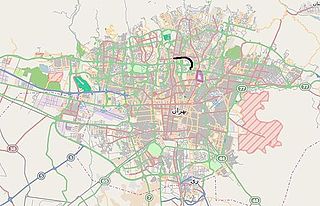
Shahid Haghani Expressway (Highway) is an expressway in Tehran. It starts from Resalat Expressway and ends in Vanak Square.

Shahed - Bagher Shahr Metro Station is a station in Tehran Metro Line 1. It is between Haram-e Motahhar Metro Station and Palayeshgah Metro Station. It is located north of Behesht-e Zahra beside Northern Behesht-e Zahra Expressway.

Hamideh Kheirabadi was an Iranian film and theatre actress. She played in more than 200 feature films and in over 20 television series. In Iran, she is affectionately referred to as Nādereh and Mother of the Iranian Cinema.
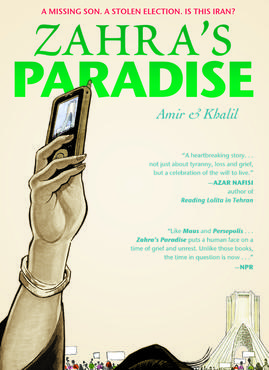
Zahra's Paradise is a webcomic and graphic novel by Amir Soltani and Khalil set in modern Iran. It has been described as a political webcomic dealing with real-time events. Its story follows a mother searching for her son, who disappeared around the time of Iran's 2009 elections. Serialized online beginning in early 2010, Zahra's Paradise was published in hardcover format in 2011 and has received numerous positive reviews in mainstream press and blogs.
Parviz Aboutaleb was an Iranian football player and manager. He was born in Tehran, Iran. Aboutaleb died of complications of Alzheimer's disease on June 9, 2020. Parviz will be buried in Tehran's Behesht Zahra Cemetery.
Beheshti is a village in Azimiyeh Rural District, in the Central District of Ray County, Tehran Province, Iran. At the 2006 census, its population was 8,569, in 2,262 families. Behesht-e Zahra cemetery is located nearby.

Kahrizak Metro Station is the final station of the Tehran Metro Line 1 and is located in Kahrizak, south of Behesht-e Zahra, Tehran, Iran. The next stop north is Haram-e Motahhar-e Emam Khomeini. The station was opened on July 21, 2011.
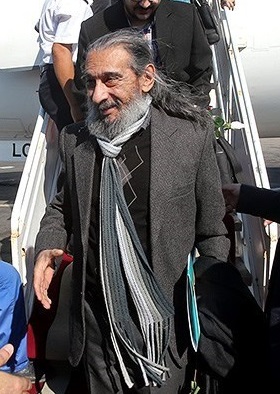
Anoushirvan Arjmand was an Iranian actor, best known for his roles in films such as Duel (2004), Tardid (2009), and He Who Said No (2014). He also appeared in the television series Mokhtarnameh, The Gun Loaded and Shaheed-e-Kufa. He was born in Zahedan, Sistan and Baluchestan Province although his family were originally from Mashhad.
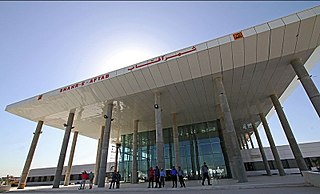
Shahr-e Aftab Metro Station is a station in Tehran Metro Line 1. It is located in Aftab Rural District, near Behesht-e Zahra. The station serves Shahr-e Aftab Expo and Shahed University. The next station is on one end Shahed - Bagher Shahr Metro Station, towards Tehran city centre, and the other end Shahr-e Forudgahi-e Imam Khomeini Metro Station.
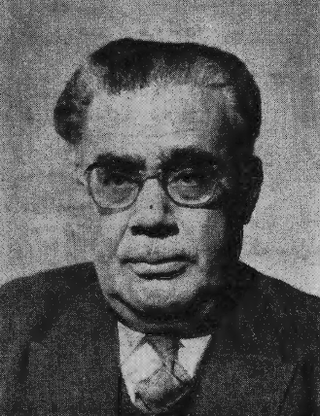
Abdolrahman Faramarzi was an Iranian journalist, writer, educator, deputy of parliament and poet. He was born in Gachuyeh, Faramarzan, Bastak, Hormozgan Province, and died in the capital Tehran. Together with Mostafa Mesbahzadeh, Faramarzi co-founded Kayhan newspaper. Faramarzi was buried in the Behesht-e Zahra cemetery in Tehran.















